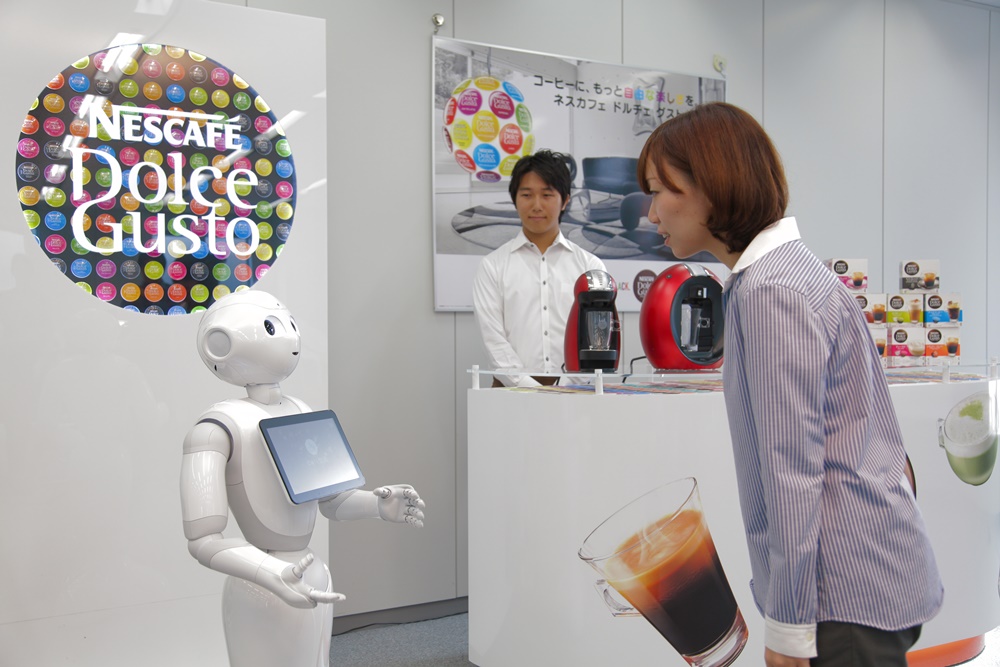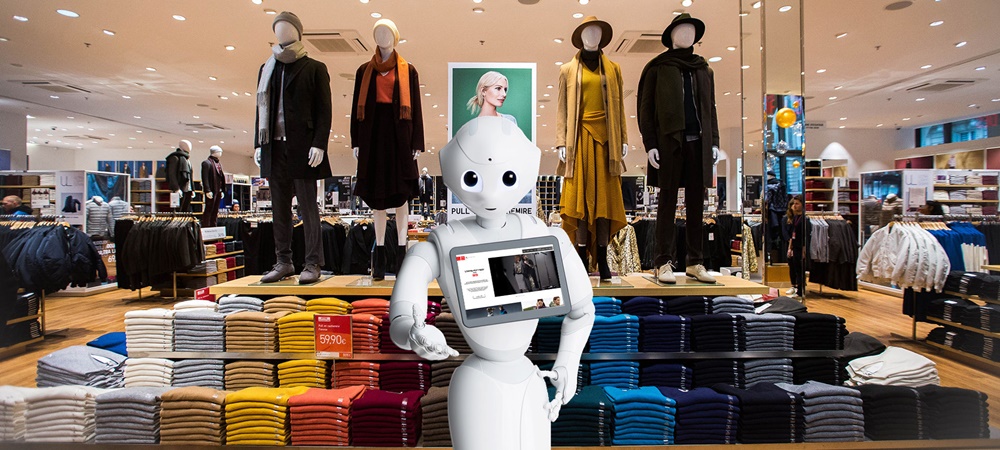Pepper the robot in a Uniqlo store.
Retailers including Amazon and Starbucks are using artificial intelligence to make their customers’ lives easier. Paul Carroll reports.
Following the recent Google I/O developer conference in Mountain View, California the talk (pun intended) of the town has been about the powerful demo of Google Assistant making an actual phone call using Google Duplex technology. While the term ‘game changer’ gets thrown around a fair bit in this industry, this next-step technology certainly qualifies. Google CEO Sundar Pichai showed a call placed to a hair salon to book an appointment using the Assistant, with a natural sounding voice, even dropping in a casual ‘mhm’ early into the conversation.
While this tech is very much in the development stage, there are already powerful examples of artificial intelligence (AI) in play within retail. SoftBank Telecom in Japan partnered with French robotic company Aldebaran to develop ‘Pepper’, a humanoid robot that can interact with customers. Around 140 SoftBank stores now use Pepper as a customer service greeter. This has led to a 70 per cent increase in foot traffic and a 300 per cent increase in revenue.

Pepper has also been used in Nescafe stores in Japan.
Closer to home, NIB Health Funds introduced an intelligent chatbot in December 2017 to help customers with health insurance enquiries. Called ‘Nibby’, the bot can provide simple answers to questions and point customers to the right sales channel or claims department. First launched on their ‘contact us’ webpage, it is now being expanded to pop up to offer guidance when customers are self-serving online.
Brendan Mills, NIB chief information officer, said Nibby allows customers to access the information they need at a time that suits them, without having to wait for a consultant.
It’s hard to write about AI in the retail environment without mentioning Amazon, which has been investing heavily in this technology. Shoppers are already familiar with the ‘something else you might like’ suggestion when they’ve purchased a product on the marketplace, which is a modest example of AI at work.
More recently Amazon has been testing fleets of drones to handle deliveries. Then there’s Amazon Go in Seattle, which is a fully-automated supermarket where customers walk the aisles and pick the products while sensors track what they’ve selected (and what they’ve put back) and charge a customer’s account when they leave the store—no checkout required.
Starbucks recently introduced a new service, My Starbucks Barista, which is paired with Amazon’s Alexa platform. This is a voice-activated AI assistant that can remember your usual order, make informed suggestions of what else you might like, and place the order for you in the nearest Starbucks location, all from voice commands.
Hopefully you’re inspired to examine how your own customer interacts and learn from what the big players are doing in this space. Look for successful traction in AI use cases (those that actually increase revenue and aren’t just flashy projects) from companies like Amazon and others in the coming 12 months, as new standards in service and interaction are set. It’s those retailers that continue to evolve that will rise to the top.
Paul Carroll is the CEO of Pure SEO Australia.
Sign up to the RetailBiz newsletter.

